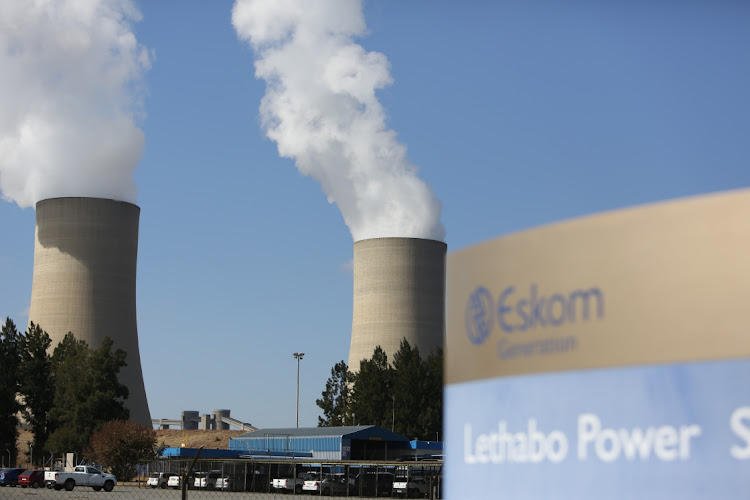The treatment of Eskom’s debt was always going to be complex

The Treasury has found a clean way to solve the problem, explained its rationale and published all the detail in publicly available documents
After the initial positive reaction to the 2023 Budget Review, a narrative has developed that the Treasury’s treatment of the R254bn Eskom debt takeover hides the true fiscal position and risks. Fellow columnists Claire Bisseker and Mamokete Lijane have made this point on these pages. In my view they are seeing the minute trees of the accounting treatment and miss the forest of the big fiscal, economic, social and national security risk posed by Eskom’s debt and its inability to supply energy consistently to the country.
Their view is echoed by the former Treasury deputy director-general for the budget office and now adjunct professor at Wits, Michael Sachs, as well as another former Treasury official who was responsible for modelling and forecasting, Owen Willcox. I have not seen this opinion expressed in public by Willcox, but his name comes up every time I questioned the narrative. Although it seems there are several economists who share this view, the reasoning for their cynicism appears identical, almost word for word, and it seems to go back to former Treasury officials.
The argument goes as follows: treating the Eskom R254bn as a loan instead of a bailout means it is not in the expenditure figures and therefore not part of the fiscal deficit. This appears to be a way to keep the spending out of the deficit and therefore shows an inflated or misleading improvement in the primary surplus. I have some sympathy for this view, but differ due to the magnitude of the problem that is Eskom’s debt and its operations.
For years almost every economist in the country has demanded that the Treasury come up with a solution to Eskom's debt problem, but I don't remember any proposed solutions the Treasury could consider. Then the Treasury announced a debt takeover of between a third and two thirds of Eskom’s R422bn debt in the 2022 medium-term budget policy statement (MTBPS), and everyone couldn't wait to see how this would be done. The favoured scenarios were either the Treasury taking the debt directly onto the state’s balance sheet, or paying the capital and interest as and when it came due. As we now know, the Treasury chose the second option. So, no surprise there.
The issue that is now contentious is the fact that the debt is not reflected as expenditure and therefore part of the primary fiscal deficit. It shows up in the debt service costs and gross borrowing requirement instead. Guarantees also do not show up in the primary deficit.
Here is the big picture. First, Eskom’s debt is historic and complex, whichever way one looks at it. I imagine that’s why it took the Treasury so long time to come up with a solution.
Second, I don’t think anyone expects Eskom to repay the debt given that it is losing market share to private power producers, households and corporates that are finding their own solutions to their energy needs. It is also losing revenue from municipalities, households and businesses that are not paying for the electricity they are using when there is no load-shedding.
Third, if the Treasury is going to take over the debt and the debt service costs and pay for it as and when it becomes due, it’s the same as normal government redemptions, which as anyone who follows fiscal policy knows are not included in expenditure and the primary deficit but are part of the gross borrowing requirement. The Treasury has not budgeted for redemption as part of its spending.
Fourth, the accounting gurus, of which I am not one, usually do not include special or one-off expenditure items above the line for comparison, and rather show them below the line. Simplistically, this makes sense because they are not a common feature of running a business, so you don’t want that to distort the overall financial position. It’s the same with the Eskom debt — after three years it will not be part of the balance sheet, so why include this special, one-off item in spending and the deficit?
It's also worth reflecting on how the Gautrain loan was treated. I understand it was included below the line, just like Eskom’s. So why the call for a different approach now?
The treatment of Eskom’s debt was always going to be complex. The Treasury found a clean way to solve the problem, explained its rationale, and published all the detail in publicly available documents. I understand what the Treasury did, and as far as I'm concerned, nothing was hidden. And I follow fiscal policy, have a keen interest in public policy and the future of our country, and was once at the same institution thinking about how public policy advances economic development.
Economic policy decision and execution must always be scrutinised, but the focus here should surely be on how to resolve Eskom's problems rather than on the accounting treatment. We who are watching from the sidelines must try to avoid throwing mud at those in the hot seat finding solutions to the complex problems facing the economy, especially if we cannot come up with better solutions that advance SA's economic development.

Donald.Nkadimeng (15:03:44 - March 6th, 2023)
Fully concur, the transfer of debt into the balance sheet was going to raise a number of questions and consent required from all lenders, i.e, which debt is transferred and why preference over others. The legality around the transaction was complex. The chosen option is much cleaner which again enable NT to closely monitor the redemption of the existing debt thereby reducing the exposure every time there is the redemption. The conditionalities ensures that the accumulation of new debt is at halt in the medium term. Looking forward to hearing alternatives if any and how they were going to work.